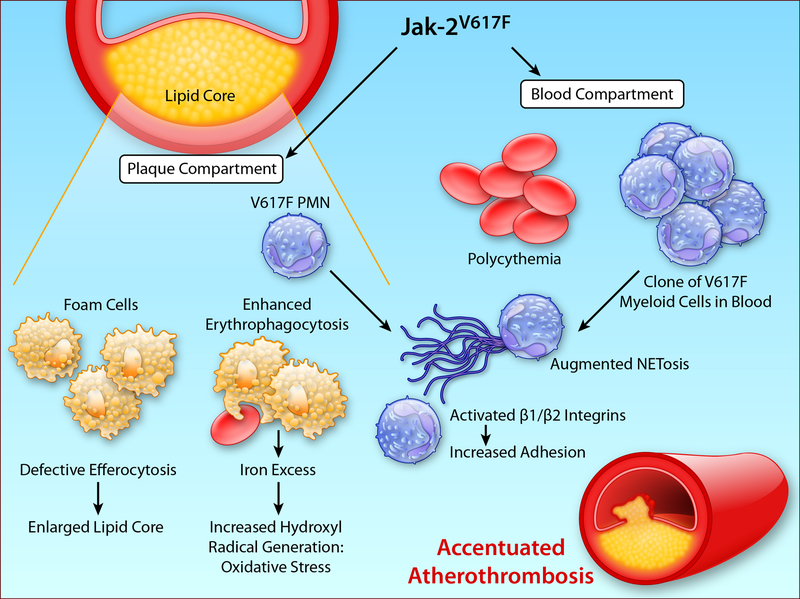Figure 1B:
The JakV617F can influence atherothrombosis both by actions within the plaque and by effects on circulating leukocytes. The left side of this diagram depicts some of the alterations in aspects of plaques demonstrated in mice bearing the JakV617F mutation. Impaired efferocytosis contributes to an enlarged lipid core. Increased erythrocytosis favors deposition of iron derived from heme that can generate the highly oxidant hydroxyl radical augmenting local oxidative stress. Mutant granulocytes in the blood compartment (right side) have a heightened tendency to form NETs, which may favor thrombosis and propagate vascular injury. They also have activation of β1 and β2 integrins, that can enhance attachment to the endothelium, where they may contribute to endothelial damage and thus promote thrombosis. (Illustration Credit: Ben Smith).

